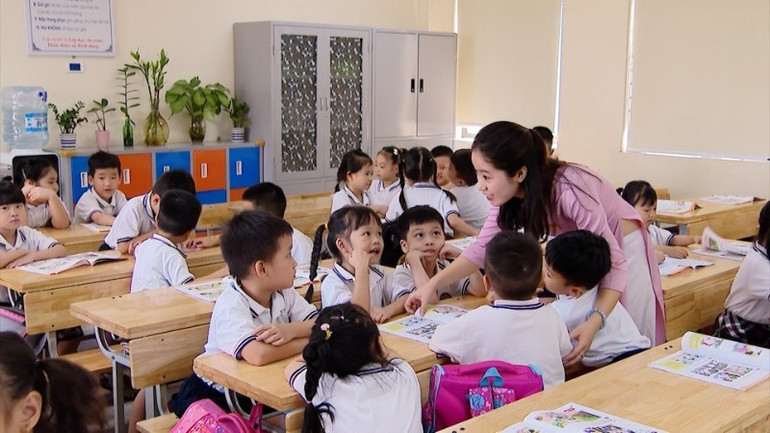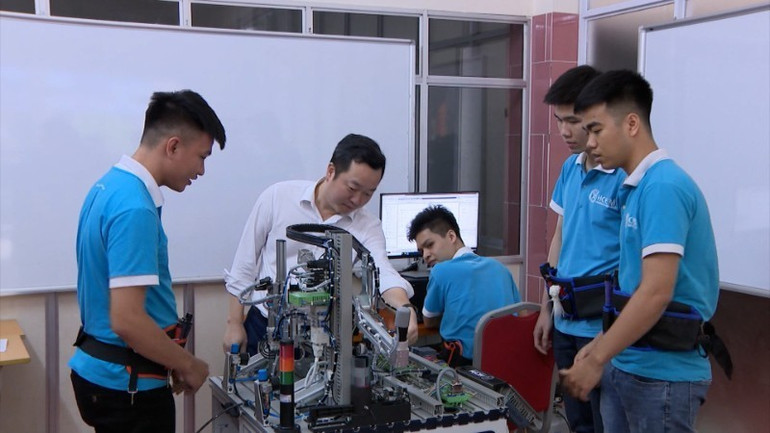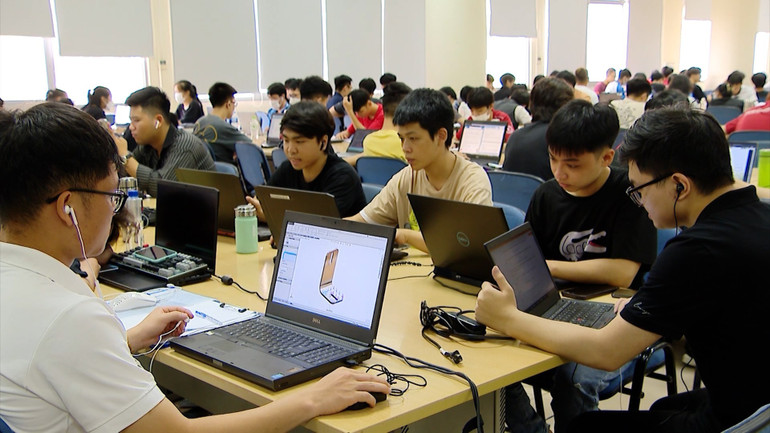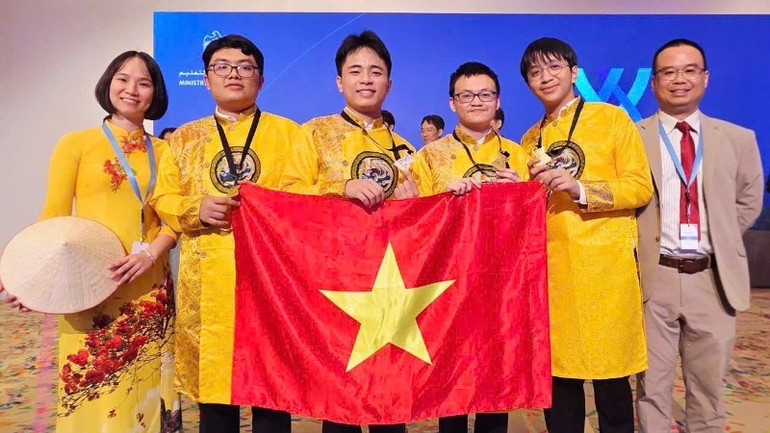
New breakthroughs at all levels of education
Resolution 71-NQ/TW emphasizes: educational development breakthroughs must start from innovation in thinking, awareness and institutions . This is a clear upgrade compared to the orientation of "fundamental and comprehensive innovation" of Resolution 29-NQ/TW, because it does not stop at internal reform but aims to create open, interconnected institutions, taking public investment as the driving force for socialization.
Goals by 2030: Expand equitable access, improve the quality of preschool and general education to reach advanced levels in the Asian region; 100% of higher education institutions and at least 80% of vocational education institutions meet national standards; 20% of institutions are invested in modernly equivalent to developed countries in the region.
Vision to 2045: Vietnam has a modern, equitable, high-quality education system, among the top 20 countries in the world ; develop at least 5 higher education institutions in the top 100 universities globally in a number of fields, according to prestigious international rankings.
A notable breakthrough is the reaffirmation of the leading role of the State in investing in education, while still valuing the role of non-public education – as an important component of the national education ecosystem. The open education model, lifelong learning, and multi-dimensional connectivity are not just slogans but have become a consistent strategy – something that has never been clearly defined in previous resolutions.

Different from the orientation of “streaming after junior high school and high school” of Resolution 29-NQ/TW, Resolution 71-NQ/TW also clearly establishes: vocational education is a pillar in the strategy of training human resources with high vocational skills. This is a repositioning transformation – from a “narrow path” to a “highway” leading to a high-quality labor market.
Reform of the vocational education model will be promoted comprehensively: adding secondary vocational education equivalent to high school; integrating cultural education with vocational education; enhancing linkage with practical universities; applying new technology and management according to international standards. The resolution also creates a legal corridor for businesses to participate more strongly - from establishing vocational schools, establishing human resource training funds, to receiving credit incentives for vocational education development projects.
One very concrete step is to expand high-quality vocational training programs for ethnic minorities – something that has not been mentioned in detail in previous documents.

If Resolution 29-NQ/TW emphasized university autonomy, Resolution 71-NQ/TW showed a more far-reaching vision: considering university education as the driving force for national innovation, the center for developing highly qualified human resources and elite intellectuals.
The resolution requires urgent development of a strategy for higher education development; investment in modernizing infrastructure, expanding operating space; formation of high-tech university zones, development of new-generation technology universities, innovative universities, and universities integrated with the regional startup-innovation ecosystem.
Internationalization policies have also been promoted like never before: attracting excellent lecturers from abroad with outstanding incentives; building training programs according to international standards; expanding public-private cooperation, linking with large enterprises and globally prestigious universities; promoting digital education, cross-border models, and joint research institutes.
“Expanding development space” is no longer a metaphor but has been quantified with specific goals – from post-secondary education rates, the number of qualified schools, to global rankings.

Budget priority, free textbooks
A clear breakthrough in Resolution 71-NQ/TW is the strong commitment to financial resources - something that was set out in Resolution 29-NQ/TW but lacked effective implementation mechanisms. This time, the target is specified in budget targets: spending on education reaches at least 20% of total state budget spending, of which at least 5% is for investment and 3% for higher education.
This is not only a number of political commitments, but also the foundation for realizing major reform orientations, from schools to programs, from staff to administration.
Notably, for the first time, the education finance policy raises the issue of providing free textbooks to all students nationwide from now until 2030 - a step forward with profound social significance, not only reducing the burden of learning costs for families but also ensuring equal access to knowledge for all subjects.
Along with that is the policy of increasing the preferential allowance for the profession to at least 70% for preschool and primary school teachers, and 100% for teachers in disadvantaged areas - a move that shows a shift in investment thinking: from "facilities are key" to "teachers are the force that determines the quality of education".
This is a connection with the spirit of Resolution 29-NQ/TW, but pushed to a new level of implementation and regional equity.
However, financial investment is only one part. The new resolution is not limited to curriculum or textbooks as in the previous approach. This time, innovation is spread across all aspects: institutions, school models, teaching-learning organization, administration, human resources, technology, and finance. Schools are no longer "places for transmission", but must become spaces for innovation, creativity, and capacity building for learners.

Unlike Resolution 29-NQ/TW, which focuses on orientation frameworks and general principles, Resolution 71-NQ/TW sets clear, quantifiable, and time-bound targets, such as “completing universal upper secondary education by 2035,” or “at least 5 higher education institutions in the top 100 universities in the world by 2045.” These specific targets not only create pressure for implementation, but also force the entire education system to transform its thinking in governance, assessment, and accountability.
The essence of this reform is to change the educational development model: from “aiming at output standards” to “aiming at comprehensive human development”. From education for exams to education that opens up capacity, nurtures inspiration and civic responsibility. And to achieve that, we cannot rely only on budget or policy, but need the participation of the whole society, of each teacher, and each school.

Source: https://nhandan.vn/nghi-quyet-71-nqtw-voi-muc-tieu-doi-moi-nang-tam-giao-duc-viet-nam-post904155.html






![[Photo] President Luong Cuong receives Speaker of the New Zealand Parliament Gerry Brownlee](https://vphoto.vietnam.vn/thumb/1200x675/vietnam/resource/IMAGE/2025/8/29/7accfe1f5d85485da58b0a61d35dc10f)


![[Video] "Building a STEAM LAB classroom to meet the 2018 general education program"](https://vphoto.vietnam.vn/thumb/402x226/vietnam/resource/IMAGE/2025/8/29/6a94c4cc91f94ad9b58f5d500860d6fa)



















![[Photo] Hanoi is ready to serve the occasion of the 80th National Day Celebration on September 2nd](https://vphoto.vietnam.vn/thumb/1200x675/vietnam/resource/IMAGE/2025/8/29/c838ac82931a4ab9ba58119b5e2c5ffe)































































Comment (0)